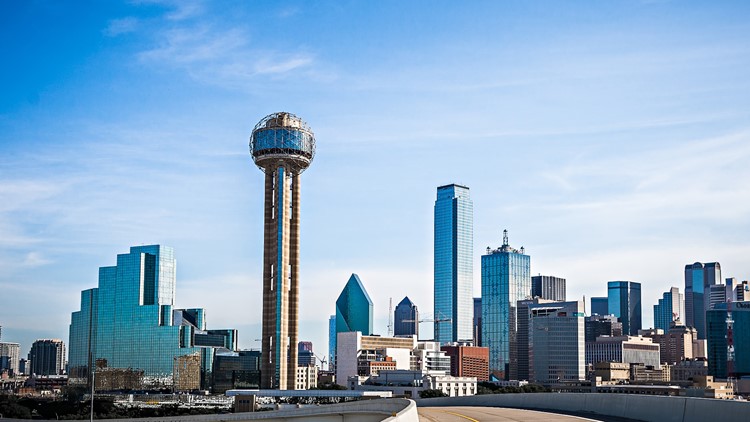DALLAS — The latest version of ForwardDallas, the city’s proposed land-use plan for the next decade-plus, got a hearing before the Dallas City Council’s economic development committee Monday.
The City Plan Commission voted 10-4 to send the plan to the full city council late last month following hundreds of meetings and heated debate since the first iteration of the plan was released last fall.
City officials have emphasized the plan is advisory in nature -- a guide for future development -- and not zoning law.
But while Dallas officials have discussed ForwardDallas for over a year, the plan and its potential impacts have meant different things to its supporters and detractors.
Here's what the plan is, what it isn't, and how it could impact Dallas in the future.
So, what is ForwardDallas?
Proponents of ForwardDallas say the proposed plan helps to address some of how the city has grown and changed since the city’s first comprehensive land use plan was adopted in 2006. They point to a need for higher/middle-density homes, such as duplexes, triplexes and fourplexes, to add to the city’s housing stock. Supporters also say the plan seeks to address concerns around environmental justice and racial equity in how the city uses its land.
ForwardDallas’ detractors say the plan undermines and destabilizes single-family neighborhoods by eliminating single-family zoning and encouraging the construction of multi-family residences in their neighborhoods, dwarfing single-family homes.
But ForwardDallas is a guiding document that city officials will use, along with input from residents, city staff and the city council, in deciding whether or not to allow a development to be built. For example, ForwardDallas might endorse increased density in a single-family neighborhood, but any development would still need to go through several steps before approval.
“Many cities across the county, as required by state statutes, do adopt comprehensive plan[s] to guide future growth in their city. It…has a long-term time frame, say 20 years, sometimes even longer, and it covers the entire city and multiple subjects,” said Dallas Planning and Development Department Director Emily Liu. “However, a comprehensive plan is advisory in nature only. It is a guide, a recommendation. It is not zoning. It is not a legal document.”
The plan is divided into sections including land-use themes, placetype descriptions, a future placetype map, and implementation plan.
ForwardDallas divides the city into “placetypes” defined by the types of structures already on the land or the types of development that the city wants to see built there in future. The community residential placetype, for example, includes single-family homes, parks, and schools. The neighborhood mixed-use placetype, by contrast, incorporates retail, dining, and a mix of low-and-medium density residential.
Each land-use theme comes with goals, according to ForwardDallas:
Environmental justice and sustainability: Protect communities from the effects of environmental hazards while enhancing environmental quality through conservation and sustainable practices.
Transit-oriented development: Advance safe, walkable mixed-use development around DART stations and other modes of transportation to better connect to housing, jobs, and more.
Housing choice and access: Increase attainable housing options throughout the city.
Economic development and revitalization: Promote equitable development across the city, including through revitalization of neighborhood centers, commercial corridors, employment center and transit areas.
Community and urban design: Adopt and implement context-sensitive design and development guidance to help shape Dallas’ streets, sidewalks, buildings and open spaces.
City Council Committee reaction to the proposed plan
Some city council members echoed the concerns of some residents about the potential impact on single-family neighborhoods.
“The predominant message that I would echo...that I know you have already heard is their concern about damaging single-family neighborhoods throughout the city by the intrusion of multi-family development, which will serve to destabilize those neighborhoods,” council member Paul Ridley said.
Council member Adam Bazaldua noted confusion around ForwardDallas.
“There’s a lot of misinformation. I hear from people on a regular basis that have heard from people in communities that I serve and have not been given a fair understanding of what this is,” Bazaldua said. “I love seeing the planning commission work through a lot of those concerns.”
Willis likewise expressed concerns about misinformation surrounding ForwardDallas.
“We have to take a look at this. We have to take a look at something that’s 18 years old,” council member Gay Donnell Willis said. “I think we’ve gotten to a point where it’s ours now, and we’ll continue to hear from the public, but I think we owe it to all of ourselves and that our public deserves the respect of trading in truth.”
What’s next for ForwardDallas?
The plan will come up for further discussion by the city council. More public hearings on the issue are expected this fall.



